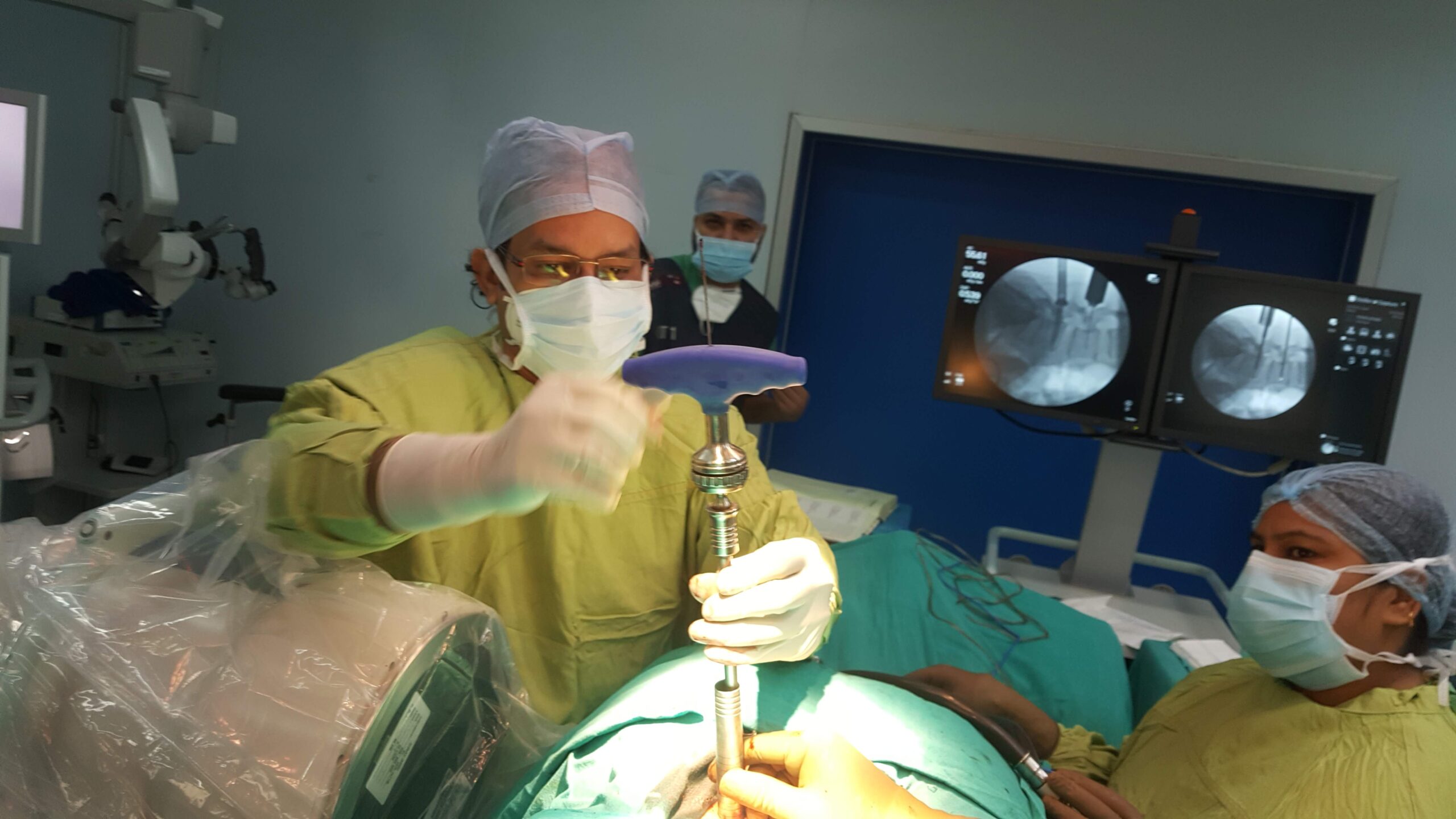Introduction:
Mechanical Thrombectomy (MT) is an endovascular procedure in which occluded brain vessels are opened by various devices, the most common of which is stent retrievers. By removing the blockage, MT helps improve blood circulation in the brain, thereby reversing the deficits.
Primary Goal of Mechanical Thrombectomy
The primary goal of mechanical Thrombectomy is to restore the occluded blood flow in the brain. By restoring proper blood flow to the brain, mechanical thrombectomy reverses neurological deficits and improves overall patient outcomes. Overall chances of dependency are reduced.
Indications for Mechanical Thrombectomy
Mechanical Thrombectomy is indicated for patients with large vessel occlusion of the brain like internal carotid artery, middle cerebral artery etc who presented within the window period of around 6hrs. Now with the latest studies, this window period can be extended in certain groups of patients to 18-24 hours also, but that number is small and it’s always better to intervene early as the saying goes “TIME IS BRAIN”.
How should patients prepare for Mechanical Thrombectomy?
As this is an emergency procedure so as soon as the diagnosis is established by matching clinical symptoms with radiological findings of NCCT/MRI and CTA/MRA or perfusion studies, the patient can be wheeled to the neuroangio suite for the procedure with or without the infusion of clot bursting medicine as the case may be.
Role of clot bursting medicine in Mechanical Thrombectomy
If the patient presents within 4:30 hrs of symptoms and no large vessel occlusion is found on imaging clot bursting medicine is the only treatment but if large vessel occlusion is diagnosed then along with clot bursting medicine mechanical thrombectomy is also offered as standard treatment protocol.
Procedure performed for Mechanical Thrombectomy
MT is performed by puncturing the groin through the femoral artery by a needle. Usually depending upon patient to patient procedures can be done under local anaesthesia to general anaesthesia. After puncture, small calibre catheters and wires are introduced and once at the site of occlusion, a stent retriever device is deployed. The main point to remember here is the device is deployed only temporarily and removed along with the clot.
Postoperative Care Involve and what are the long-term outcomes.
Since its an emergency procedure the patient is watched in NSICU neurologically as well as hemodynamically as there are some chances of perfusion bleed or recurrence of stroke in the initial few days. So these days further workup is also done to know the cause of stroke thereby starting appropriate medicine.
Conclusion:
MT is an important and gratifying procedure for the treatment of large vessel occlusion of the brain and for improving long-term outcomes. Think of it this way: a young sole earning family member can be permanently bed-bound and helpless without revascularization. Similarly old people who are independent all through their life may psychologically struggle to be in bed and dependent on others for day-to-day activities.
You can easily connect with a top Mechanical Thrombectomy hospital in Delhi, which can provide advanced treatment and caring support for your Mechanical Thrombectomy treatment.




